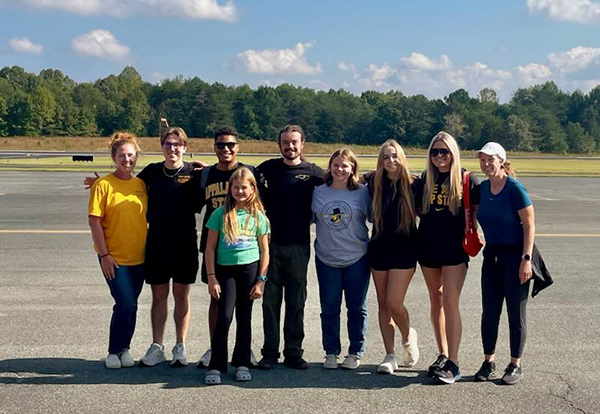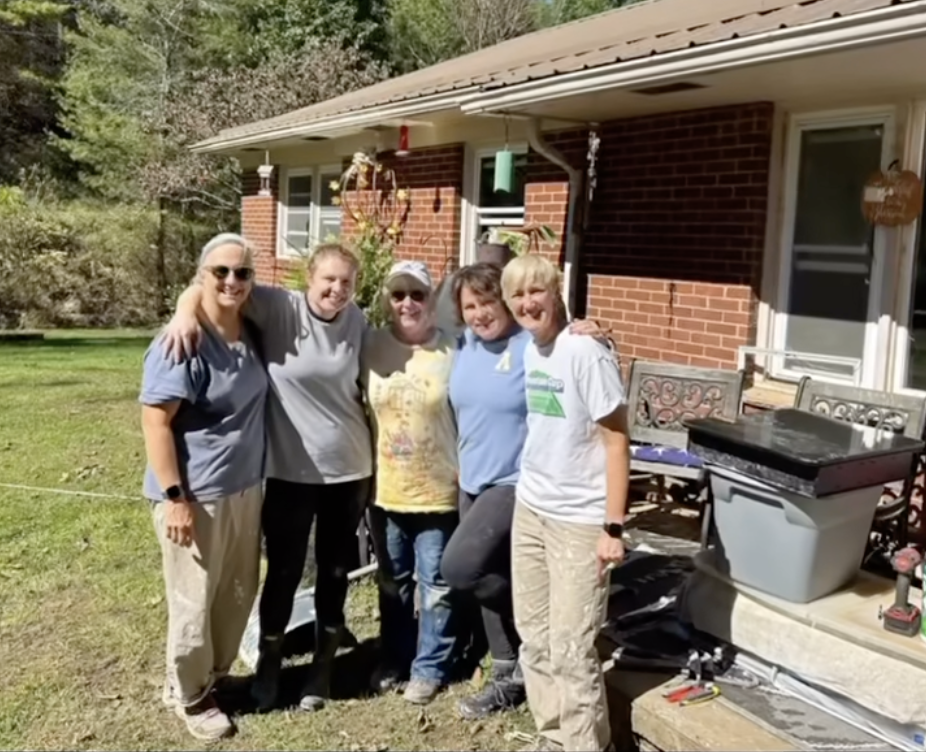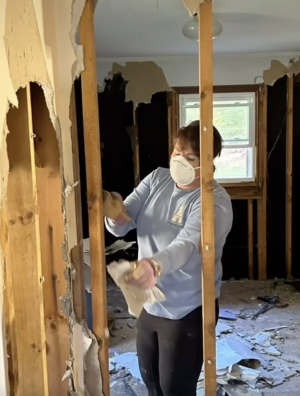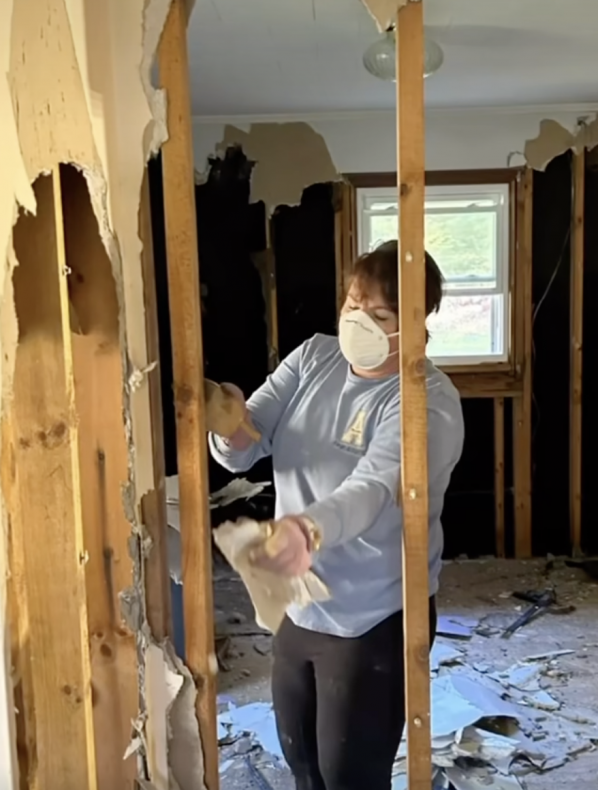By Amanda Mlekush
Finding individuals who work at the Beaver College of Health Sciences and sprang into action to volunteer after Hurricane Helene damaged the region in late September is easy – the challenge is sharing their stories because there are so many.
Faculty, staff and students sprang into action, organizing groups and mobilizing food drives; conducting welfare checks and staffing non-emergent, yet very important, phone lines; some sifted through the debris of others’ flooded homes and knocked down drywall to start the rebuilding process.
“Even though each of their stories are different, there is one consistent thread through all of the anecdotes I’ve heard about our faculty, staff and students helping after the hurricane: they found unique ways to use their training, skill sets and compassion to be of help to others,” said BCHS Dean Marie Huff, PhD. “I’m so proud to be part of this college and university community which made an incredible impact on beginning the recovery process.”
Here are just a few highlights from some of our ‘Helene helpers’ who work in BCHS:
 Nursing faculty member Amber Welborn (who was also assisted by her kids) coordinated with a group of App State Nursing students to pack first aid kids, glucose monitors and other medical supplies to be sent to field hospitals in affected areas. (The photo above shows Welborn and the group of volunteers at the airstrip in Lincolnton-Lincoln County Airport.)
Nursing faculty member Amber Welborn (who was also assisted by her kids) coordinated with a group of App State Nursing students to pack first aid kids, glucose monitors and other medical supplies to be sent to field hospitals in affected areas. (The photo above shows Welborn and the group of volunteers at the airstrip in Lincolnton-Lincoln County Airport.)
In fact, so many members of the Nursing faculty, staff and students were involved in a number of different ways helping with the aftermath of Helene, including some who volunteered to work at hospitals who needed staffing support. Melinda Bogardus visited and assisted families who needed help on behalf of the Immigrant Justice Coalition (Bogardus volunteers as the organization’s treasurer), including a family with a 20-day-old infant who were worried about the potential impact of mold growing inside their flooded trailer. Clinical Instructor Ashley Greene worked with younger students at Hardin Park School’s emergency child care outreach, making calming bottles and fidget keychains and helping them talk about their emotions about the storm and its devastation.
Representatives from the Department of Public Health and Exercise Science relied on their expertise to respond in a number of different ways, one of the most visible being the actions from volunteers from the Appalachian Medical Reserve Corps (AMRC), a group established after COVID as a way to provide health outreach and support to the community.
Jennifer Schroeder Tyson coordinated the medical reserve corps’ efforts, setting up and staffing a non-emergent call center to offload the burden on the county’s 911 operators and making welfare checks on individuals who might be homebound or trapped in their homes. Schroeder Tyson said one call to the non-emergent line resulted in a large donation of insulin from a woman living off the mountain who had a reserve of insulin for her Type I diabetes. Helene-affected areas were experiencing an insulin shortage, so the group was able to coordinate donations and then provide them to the Hunger and Health Coalition, who became a central distribution hub for multiple counties for individuals with diabetes who needed the medication.
During the crisis, the AMRC started with 14 volunteers who took care of the phone lines, but eventually grew to more than 900 volunteers as Schroeder Tyson partnered with Univeristy Communications, who shared the organization as a way for volunteers to make a difference.

(Image provided shows App State staff members Mary Sheryl Horine, Heidi Tait, Stacy Sears, Kayla Hill and Sandy Moretz outside the home in Ashe County they helped clean up.)
Appalachian Health and Wellness Institute Outreach team members Mary Sheryl Horine and Heidi Tait volunteered with other folks who work in Athletics at App State to help a family in Creston whose entire home was flooded. They heard about the need through a contact who knew some of the family, and spent the day swinging sledge-hammers to demolish rotten drywall throughout four bedrooms and a bathroom in the house, which flooded after Helene. "I was interested in finding something that needed to be done, and Mary Sheryl contacted me and asked if I wanted to volunteer," said Tait, who got familiar with home demolition work several years ago when working on a 1920s home that had to be taken down to the studs to become current with building codes. "In many ways, the hard part was getting folks to accept the help, and we enjoyed being able to be there and help this family."

